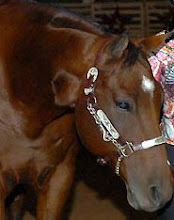The ongoing quest to find life in space has failed to yield any supportive evidence that life exists outside the earth. To prop up the idea of distant spontaneous life formation, some scientists are willing to settle for science fiction. One Serbian astrobiologist has taken cues from evolutionary paleontology—and maybe even from comic books.
Milan Ćircović of the Astronomical Observatory in Belgrade argued in a recent issue of Astrobiology Magazine that cosmic disasters might set up just the right conditions for life to evolve from chemicals. He speculated that habitable planets and the “stuff of life” that they supposedly nurture may get periodically reset by catastrophic events “like gamma ray bursts or nearby supernovae.”1 This reasoning is similar to evolutionary concepts of how life could have diversified on earth through mass extinctions.
In contrast to the classic Darwinian model—which predicts that fossils should show gradual change between transitional kinds—many fossils retain the same forms through several rock layers, and wholly different fossil kinds abruptly occur in other layers. This is generally interpreted to mean that evolution sometimes advances in sudden jumps. Somehow, natural disasters that cause massive death are assumed to kick macroevolution into overdrive.
Organisms do undergo rapid variations to fill empty niches formed after catastrophes. But they always remain within their own kinds. A dramatic transition between kinds has never been observed and, since the evolutionary “jump” is presumed to have occurred during an imagined time between the formation of certain rock layers, has left no record—only the conspicuous absence of transitioning life forms is noticeable.
In spite of the lack of evolutionary evidence, Ćircović proposed that cosmic disasters could similarly kick-start the seeds of life: “A gamma ray burst…would affect how quickly life develops or takes hold by causing changes in atmospheric chemistry on the planet.” Perhaps “interstellar electromagnetic radiation and cosmic rays” influence a planet’s biological environment and somehow help evolution along.1
These destructive processes are being invoked as possible agents for generating the right conditions for life to evolve—the same conditions that origin of life researchers have been unable to replicate through almost a century of intelligent, purposeful experiments.2
This gamma ray concept is reminiscent of comic book legend Stan Lee’s The Incredible Hulk, in which the hero, Dr. Bruce Banner, gets a mega dose of the otherwise deadly gamma radiation.3 The result: Banner can transform into the super-strong, super-sized green giant that has graced big and little screens in recent times.
To be clear, Ćircović is not proposing that life itself is improved or could be started by gamma ray bursts, but that the planetary conditions for supporting life could be. But is that really any less fanciful or more scientific? To say that the destructive forces that occur near galactic cores, where planets supposedly form, can foster life-sustaining environments is as much science fiction as Lee’s Hulk.
Supposedly, gamma ray bursts, cosmic rays,4 and supernovae “can be interpreted as resetting astrobiological clocks which tick on each habitable planet in the Milky Way.”1 There is not a shred of scientific evidence that astrobiological clocks exist anywhere in the universe, except in comic book-like hypotheses. For that matter, the only habitable planet yet discovered is earth, just as the biblical creation model predicts.
skip to main |
skip to sidebar






Awarded by Kat

Search This Blog
About Me

- Mac and Kat
- Kat~ Hey Everyone! I have created this blog along(Got Jesus) with my cousin to share my discoveries I have found while seeking out the truth in the scriptures. More than anything I want to live my life for Jesus and in everything I do strive to do it with excellence to please Him. My goal is to have my name written in the Book of Life that God holds. We must always be ready to defend and give answers concering our faith to bring others to Him. Above all I want to apply what I find to my life!!! Thanks for looking at my blog!!! Mac- I am a Christian, seeking to find the Will of God everyday. I hope that I will be able to share my faith to everyone who visits our blog, while growing as well. I dedicated my life to Christ four years ago. I love being outside! I have the greatest parents! and lots of siblings that God has blessed me with! Psalm 19:14-14 May the words of my mouth and the meditation of my heart be pleasing in your sight, O LORD, my Rock and my Redeemer.
1 Peter 3:15-16
But in your hearts set apart Christ as Lord. Always be prepared to give an answer to everyone who asks you to give the reason for the hope that you have. But do this with gentleness and respect, keeping a clear conscience, so that those who speak maliciously against you good behavior in Christ may be ashamed of their slander.
Our Favorite Links
Mac's dogs Butterscotch and Coco

Mac's dog Coco


Mac's Butterfly
Awards

Awarded by Kat






No comments:
Post a Comment
Thank you so much for posting on our blog! We have the comment moderation up. which means all posts will have to go past our parents before they are seen. Thanks again!